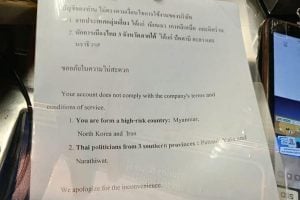Czech Republic: Historic military bunkers go on sale

In the late 1930s, what was then Czechoslovakia built an extensive network of fortifications along the border with what was then the German Reich. Prague feared that the Germans would launch a surprise assault and overrun the country’s defenses before there was time to mobilize the army and reserves.
Although the fortifications were not fully completed by September 1938, together with the mountain ranges in the border area they represented an important hurdle for the Wehrmacht and one that the Nazi generals came to fear.
Though the government in Prague had mobilized 1.1 million soldiers, and its army was ready to fight and defend itself, British Prime Minister Neville Chamberlain and his French counterpart, Edouard Daladier, concluded an agreement with Adolf Hitler in Munich on September 29 and 30, 1938. It obliged Czechoslovakia to cede to the Third Reich almost the entire border area with Germany, where a large German minority lived at the time.
That meant that practically all Czechoslovak border fortifications and concrete bunkers fell into the hands of the Nazis. Without them, the country was militarily powerless. This helped the Nazis occupy the remaining parts of Czechoslovakia on March 15, 1939. Paradoxically, the border fortifications later helped the German occupiers to defend themselves from the Red Army in the spring of 1945. Fighting on the fortified border significantly slowed the Soviet advance and cost the lives of thousands of Soviet soldiers.
Some eight decades later, the concrete defenses continue to mark the Czech countryside, silent witnesses to the country’s intention to go down fighting against the Nazis, if need be.
Since 2000, Czechoslovakia’s legal successor, the Czech Republic, has been gradually getting rid of the fortifications. The Czech army can transfer them to regions or municipalities, as well as sell them to private individuals.
“We have registered 4,993 small pre-war combat bunkers on our territory,” Petr Sykora from the Czech Defense Ministry’s press department told DW.
No military significance
Sykora added that since these installations no longer have military significance, nearly a third of the objects have already changed hands.
“Every year, several dozen buildings are settled in terms of ownership. So far, we have transferred or sold 1,767 light fortifications and 112 heavy fortifications,” he said.
The Czech army plans to sell virtually all fortifications or give them to regions and municipalities for free.
“The army will keep only a few buildings for its own purposes, such as storage facilities,” Sykora told DW. Among them are mainly larger fortress buildings. The army wants to keep one of them, for example, because it houses a seismic station for monitoring nuclear explosions.
Bunker sales rising
Every year, more border fortification bunkers are offered for sale on the Czech army’s website. “The prices usually range from €1,000 to several tens of thousands of euros,” Sykora said. The most common small fortification is the “ropik.” However, in some particularly attractive areas, such as the wine-growing region around Mikulov in southern Moravia, this bunker, including the land, costs four times as much as in others.
Since the facilities are sold at public auctions, the final price can be even higher. Nevertheless, the interest in buying bunkers is increasing.
“The current offer includes, among others, 22 very sought-after objects of the former border installations,” said Jiri Caletka, an engineer and employee of the press department of the Ministry of Defense.
Bunkers turn into tourist attractions
Some of the structures have already been renovated and turned into museums that are now drawing tourists from the Czech Republic as well as from abroad. The most visited site is the Hurka artillery fortress on the northern outskirts of Kraliky at the foothills of the Sudetes mountain range near what is now the border with Poland.
“In July and August of this year alone, we had more than 20,000 visitors for each of those months,” Martin Rabon, chairman of the volunteer community of Friends of Czechoslovak Fortifications, told DW. “Since our fortress is located on the main road between Prague and the Dolni Morava ski resort, it is the only one open to visitors all year round,” said Rabon, whose association has been active in volunteer work for 30 years.
Unique cultural monuments
Rabon is not against selling bunkers, which often don’t enjoy the status of protected or historical landmarks, to private individuals.
But he points out that sometimes there are no access roads to the structures and the ownership of the surrounding area is often unclear. “Buying something like this is nonsense,” Rabon said. Of late, he’s increasingly being asked for advice by prospective buyers. “Our main advice to potential buyers is to first get rights to the land around the facilities in question.”
Some of the properties, such as the Bouda artillery fortress, which Rabon’s association also oversees, are cultural monuments of the Czech Republic.
“However, the defense line as a whole is not protected as a monument,” he said. “That’s why it’s sensible for the army to get rid of the fortifications.”
Rabon is worried, however, that the structures may not be valued by the buyers for their historical significance.
“The future fate of these unique monuments must be secured. After all, they are witnesses to the patriotic enthusiasm of the Czechs for the defense of the republic in the late 1930s,” he said.
This article has been translated from German
SOURCE: DW News
Latest Thailand News
Follow The Thaiger on Google News:


























